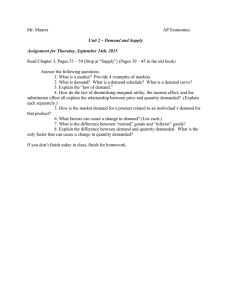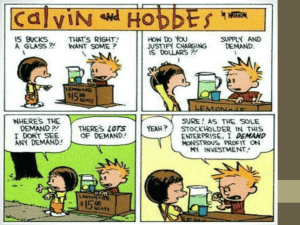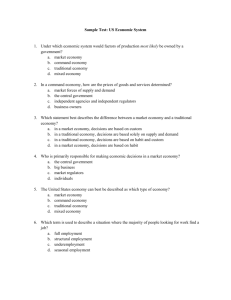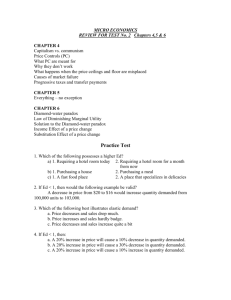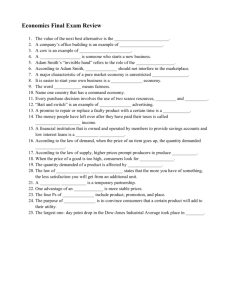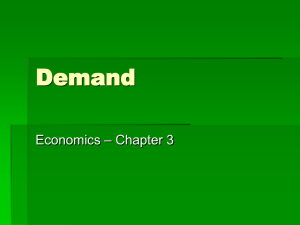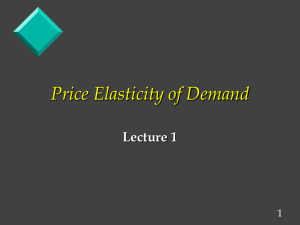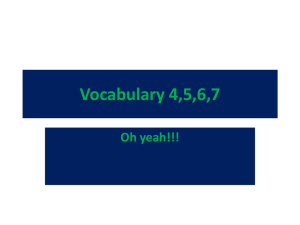File chapter 3a
advertisement
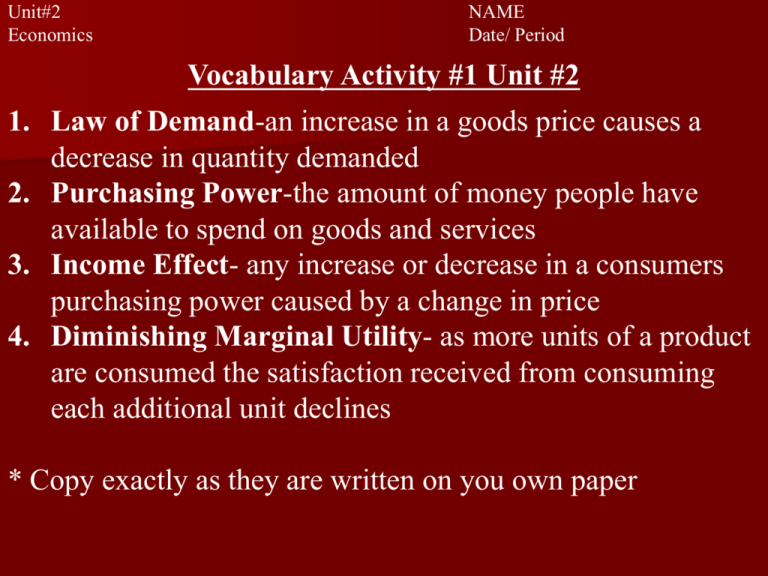
Unit#2 Economics NAME Date/ Period Vocabulary Activity #1 Unit #2 1. Law of Demand-an increase in a goods price causes a decrease in quantity demanded 2. Purchasing Power-the amount of money people have available to spend on goods and services 3. Income Effect- any increase or decrease in a consumers purchasing power caused by a change in price 4. Diminishing Marginal Utility- as more units of a product are consumed the satisfaction received from consuming each additional unit declines * Copy exactly as they are written on you own paper Paraphrase is 5 words or less 1. 2. 3. 4. Law of Demand- price goes up, Quanitydemaded down Purchasing Power-money to spend Income Effect- lower prices= more $; and vice versa Diminishing Marginal Utility- more product consumed less satisfied Paraphrase is 5 words or less Chapter 3 DEMAND SECTION 1: Nature of Demand Demand – the amount of a good or service that a consumer is willing and able to buy at various possible prices during a given time period Quantity Demanded – the amount of a good or service that a consumer is willing able to buy at each particular price during a given time period Law of Demand – an increase in a good’s price causes a decrease in the quantity demanded (inverse effect) – Income effect – how much income or purchasing power does a consumer have – Substitution effect – tendency of consumers to substitute a similar, lower-priced item – Diminishing marginal utility – the usefulness or the amount of satisfaction decreases as more of the product is consumed Before …… After 59 ½ hot dogs Demand schedules – lists the quantity of goods that consumers are willing and able to pay at a series of possible prices Demand curve – shows the relationship between the price of a product and the quantity demanded on a graph Demand Curve SECTION 2: Changes in Demand What causes demand to change? The determinants of demand include: 1. Consumer tastes and preferences 2. Market size 3. Income 4. Prices of related good 5. substitute goods 6. complementary goods 7. Consumer expectations SECTION 3: Elasticity of Demand Elasticity of demand – is the degree to which changes in a good’s price affect the quantity demanded by consumers – Elastic demand – exists when a small change in a good’s price causes a major, opposite change in the quantity demanded. A good’s elasticity can change if: The product is not a necessity There are readily available substitutes The product’s cost represents a large portion of a consumer’s income – Inelastic demand – exists when a change in a good’s price has little impact on the quantity demanded The product is a necessity There are few or no readily available substitutes for the product The product’s cost represents a small portion of the consumer’s income
